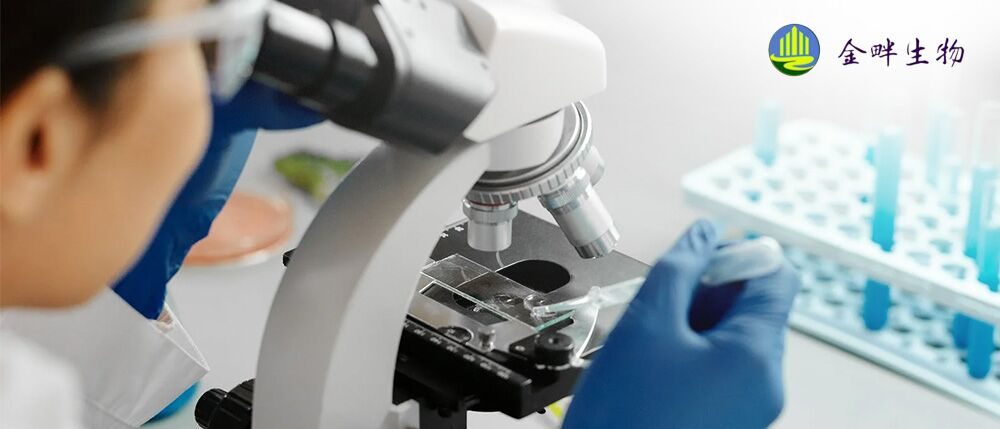Mitegen Micromounts™ 和 MicroLoops环用于高分子晶体学使用指南
Using Micromounts™ and MicroLoops™ for Macromolecular Crystallography
MicroMounts™ and MicroLoops™ are used in much the same way as nylon loop mounts, and are much easier to use than glass fibers and other mounting methods traditionally used in small-molecule crystallography. Their non-magnetic stainless steel rods are compatible with all existing goniometer bases (caps) and mounting hardware. Our suggested procedures follow.
Select a mount with a sample aperture size slightly smaller than the crystal size. Because competing nylon loops and mylar mounts produce so much more background diffraction than MiTeGen’s products, most crystallographers try to mount their crystal in the middle of the aperture, far from the nylon or mylar, and held in place by a liquid meniscus spanning the loop. This keeps the X-ray beam away from the strongly scattering nylon or mylar. But all that extra liquid boosts your background and can crush your crystal when it freezes. With MiTeGen’s products, you never have to worry about background from the X-ray beam hitting the mount.
Mount your crystal so that it rests on top of the aperture, so as to minimize excess liquid and associated background X-ray scatter. Choosing a slightly smaller aperture also makes it much easier to fish the crystal out of its solution. You don’t “loop” your crystal, you scoop it! (Of course, you can still mount your crystals the old way if you’re more comfortable with that, but our approach will usually give you better data.)
Insert the stainless steel rod of the MicroMount™ / MicroLoop™ into one of MiTeGen’s reusable goniometer bases, or else into a standard goniometer base using a small amount of, e.g., epoxy, glue or Dow-Corning #976V high vacuum grease to hold it in place. For easier handling, attach the base to a magnetic wand. The rod can also be inserted into a 0.7 mm mechanical pencil.
Slowly and carefully insert the gold-colored polyimide tip of the MicroMount™ / MicroLoop™ into the crystal-containing drop, trying to minimize fluid disturbances and motion in the drop. Slide the sample aperture under your crystal, and then carefully remove the crystal + mount from the drop, keeping the crystal centered over the sample aperture if possible. It’s often helpful to brace the magnetic wand or pencil against your other hand or, e.g., a piece of 1/4″ thick foam to help steady the mount and allow smaller, slower motions.
To retrieve crystals that have settled to the bottom of a crystallization plate, try pressing downward to bend the tip of the mount against the bottom so that it slides flat along the bottom. You can often dislodge crystals with gentle pressure.
If using MicroMounts™, you can remove excess liquid by slowly and carefully inserting a size 15 paper wick into the large opening that connects to the sample hole. If you have lots of liquid and you insert the wick too quickly, the crystal will flow with the liquid to the wick. For viscous liquids you may need to “mop up” around the crystal with the wick. Liquid can also be removed by touching a piece of absorbant paper to the back side of the aperture.
Mounted correctly, you should have very little liquid around your crystal. The flash cooling rate will be much faster and the cryoprotectant concentrations required to prevent icing much smaller. If there’s just a thin layer of liquid, it will tend to shatter (like the shell of an egg) on cooling rather than crush your sample.
To minimize ice formation on cooling and to keep your crystal from drying out during handling, first transfer it to a drop of our LV Cryo Oil™ and then mount it. If necessary, remove excess oil by wicking it away, or by flicking it away by gently tapping on the steel rod of the mount.
Flash cool the crystal by your favorite method. We recommend using the hyperquenching protocol of Warkentin et al. (J. Appl. Cryst. (2006) 39, 805-811) , a variant on standard plunge cooling in liquid nitrogen in which you you blow away the cold gas layer that forms above the liquid nitrogen just before you plunge in your sample. You can also use liquid nitrogen that has been vacuum-pumped to near its freezing temperature (to reduce boiling), or (more dangerous) liquid propane, but the hyperquenching method is safer, easier and generally gives the best results.
Comments or suggestions? Please contact us!
使用 Micromounts™ 和 MicroLoops™ 进行高分子晶体学
MicroMounts™ 和 MicroLoops™ 的使用方式与尼龙环安装座大致相同,并且比玻璃纤维和小分子晶体学中传统使用的其他安装方法更容易使用。它们的非磁性不锈钢杆与所有现有的测角仪底座(盖)和安装硬件兼容。我们建议的程序如下。
选择样品孔径尺寸略小于晶体尺寸的安装座。 由于竞争的尼龙环和聚酯薄膜安装座比 MiTeGen 的产品产生更多的背景衍射,因此大多数晶体学家尝试将晶体安装在孔径中间,远离尼龙或聚酯薄膜,并通过横跨环的液体弯月面固定到位。这使得 X 射线束远离强散射的尼龙或聚酯薄膜。但 所有多余的液体都会增强您的背景,并且在冻结时可能会压碎您的晶体。 使用 MiTeGen 的产品,您永远不必担心 X 射线束撞击底座的背景。
安装晶体,使其位于孔径顶部,以尽量减少多余的液体和相关的背景 X 射线散射。选择稍小的孔径也可以更容易地将晶体从溶液中捞出。 你不是“圈”你的水晶,而是舀它! (当然,如果您对此更满意,仍然可以用旧的方式安装晶体,但我们的方法通常会给您提供更好的数据。)
将 MicroMount™ / MicroLoop™ 的不锈钢杆插入 MiTeGen 可重复使用的测角器底座之一,或者 使用少量环氧树脂、胶水或 Dow-Corning #976V 高真空油脂将其固定在标准测角器底座 中到位。为了更方便操作,请将底座连接到磁棒上。该杆还可插入 0.7 毫米自动铅笔。
缓慢而小心地将 MicroMount™ / MicroLoop™ 的金色聚酰亚胺尖端插入含有晶体的液滴中,尽量减少液滴中的流体扰动和运动。 将样品孔滑到晶体下方,然后小心地从水滴中取出晶体 + 安装座,如果可能,将晶体保持在样品孔的中心位置。将磁棒或铅笔靠在另一只手上或者例如一块 1/4 英寸厚的泡沫上通常会很有帮助,以帮助稳定安装座并允许更小、更慢的运动。
要取出已沉降到结晶板底部的晶体,请尝试向下按压以将底座的尖端弯曲到底部,使其沿着底部平坦滑动。 您通常可以通过轻微的压力来去除晶体。
如果使用 MicroMounts™,您可以通过缓慢、小心地将 15 号纸芯 插入连接样品孔的大开口来去除多余的液体。如果您有大量液体并且插入吸芯的速度太快,晶体会随着液体流到吸芯。对于粘性液体,您可能需要用吸芯“擦拭”晶体周围。也可以通过将一张吸水纸接触孔的背面来去除液体。
正确安装后,晶体周围应该只有很少的液体。闪蒸冷却速率将快得多,并且防止结冰所需的冷冻保护剂浓度也会小得多。如果只有一层薄薄的液体,它在冷却时往往会破碎(就像鸡蛋壳一样),而不是压碎样品。
为了最大限度地减少冷却时结冰并防止晶体在处理过程中变干,请先将其转移到一滴 LV Cryo Oil™ 中,然后安装。如有必要,通过吸走多余的油,或轻轻敲击安装座的钢杆将其弹走。
用您最喜欢的方法快速冷却晶体。我们建议使用 Warkentin等人 的超淬火方案 。(J. Appl. Cryst. (2006) 39, 805-811) ,液氮中标准浸入式冷却的一种变体,在浸入样品之前,您需要吹走液氮上方形成的冷气体层。您还可以使用已真空泵至接近其冰点温度的液氮(以减少沸腾)或(更危险的)液态丙烷,但超淬火方法更安全、更容易,并且通常会给出最佳结果。
意见或建议?请联系我们!
